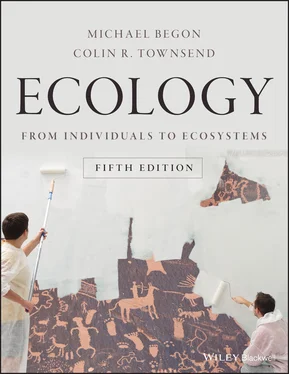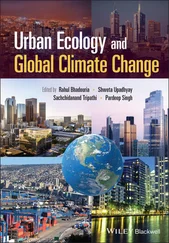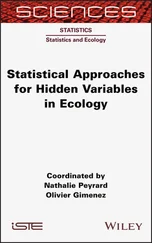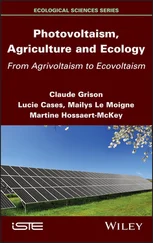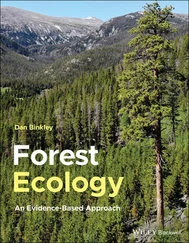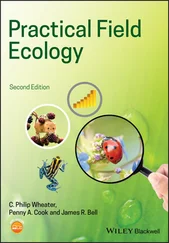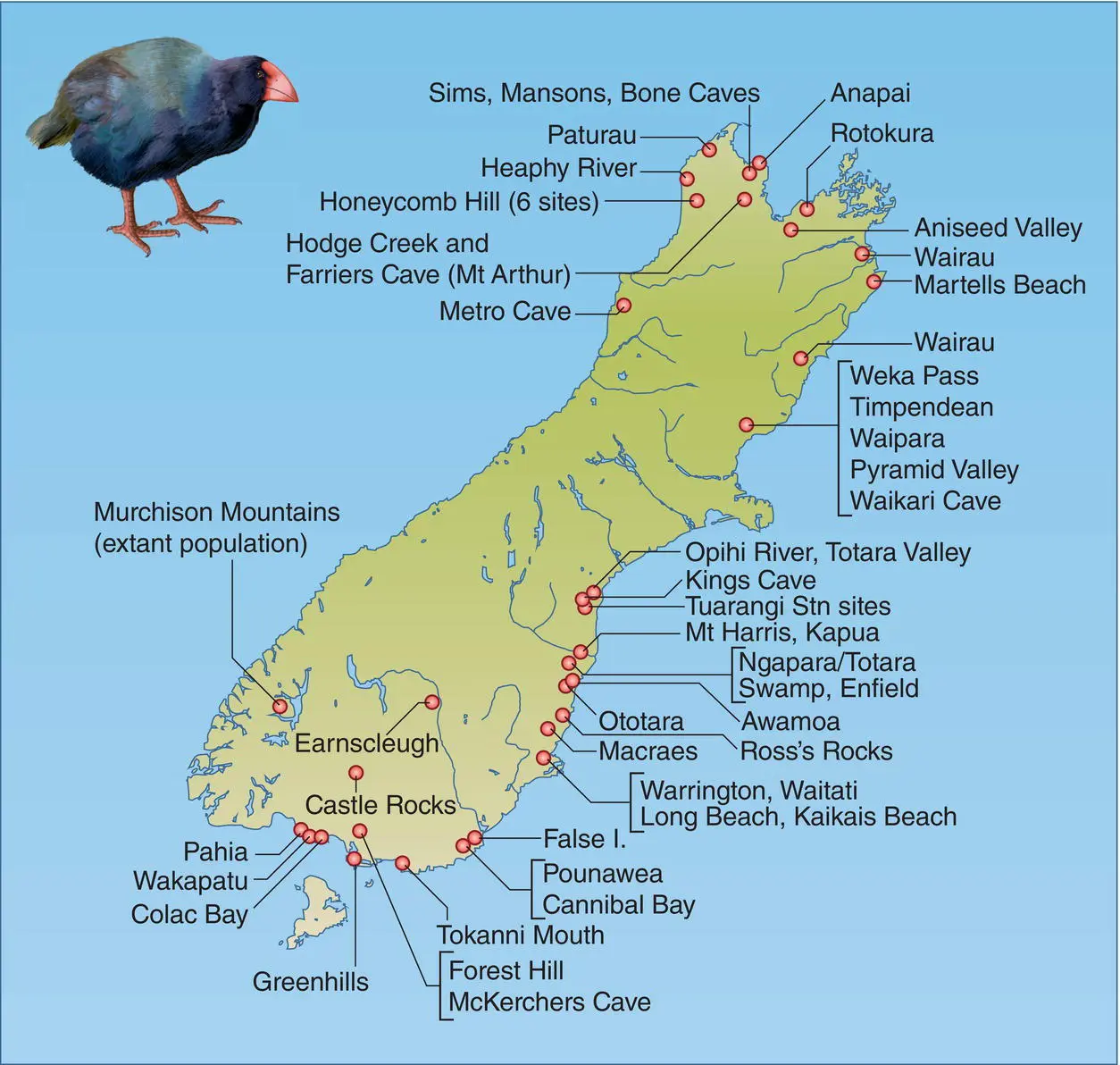
Figure 2.7 Location of fossil bones of the takahe in the South Island of New Zealand.The population had become restricted to a single site in the Murchison Mountains, but was this a true reflection of its niche requirements?
Source : After Trewick & Worthy (2001).
The remainder of this chapter looks at some of the most important condition dimensions of species’ niches, starting with temperature; the following chapter examines resources, which add further dimensions of their own.
2.3 Responses of individuals to temperature
2.3.1 What do we mean by ‘extreme’?
It seems natural to describe certain environmental conditions as ‘extreme’, ‘harsh’, ‘benign’ or ‘stressful’. It may seem obvious when conditions are ‘extreme’: the midday heat of a desert, the cold of an Antarctic winter, the salinity of the Great Salt Lake. But this only means that these conditions are extreme for us , given our particular physiological characteristics and tolerances. To a cactus there is nothing extreme about the desert conditions in which cacti have evolved; nor are the icy fastnesses of Antarctica an extreme environment for penguins. It is lazy and dangerous for the ecologist to assume that all other organisms sense the environment in the way we do. Rather, the ecologist should try to gain a worm’s‐eye or plant’s‐eye view of the environment: to see the world as others see it. Emotive words like harsh and benign, even relativities such as hot and cold, should be used by ecologists only with care.
2.3.2 Metabolism, growth, development and size
exponential effects of temperature on metabolic reactions
Individuals respond to temperature essentially in the manner shown in Figure 2.1a: impaired function and ultimately death at the lower and upper extremes (discussed in Sections 2.3.4and 2.3.6), with a functional range between the extremes, within which there is an optimum. This is accounted for, in part, simply by changes in metabolic effectiveness. For each 10°C rise in temperature, for example, the rate of biological enzymatic processes often roughly doubles, and thus appears as an exponential curve on a plot of rate against temperature ( Figure 2.8a, b). The increase is brought about because a higher temperature increases the speed of molecular movement and speeds up chemical reactions. The factor by which a reaction changes over a 10°C range is referred to as Q 10: a rough doubling means that Q 10≈ 2, and animals generally conform quite closely to this value ( Figure 2.8c) as do microbial organisms (Kirchman, 2012) and plants (Lange et al ., 2012).
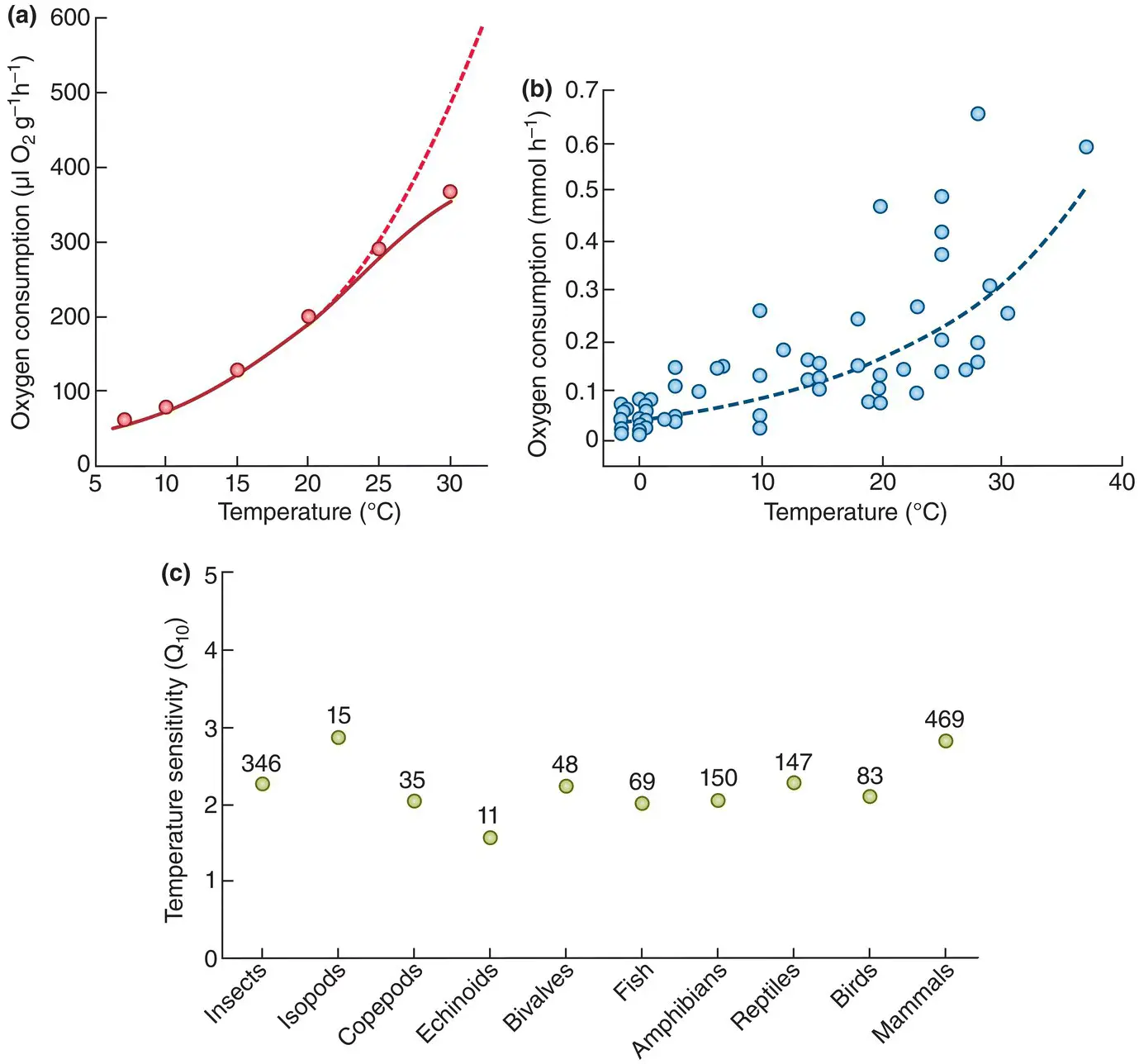
Figure 2.8 Exponential effects of temperature on metabolic reactions.(a) The rate of oxygen consumption of the Colorado beetle ( Leptinotarsa decemineata ), which doubles for every 10°C rise in temperature up to 20°C, but increases less fast at higher temperatures. (b) Relationship between resting oxygen consumption of teleost fish, plotted for a variety of species as oxygen consumption at their typical environmental temperature for a standardized 50 g fish. (c) Q 10values for oxygen consumption of various invertebrate and vertebrate animal taxa, averaged across multiple published studies (numbers shown).
Source : (a) After Marzusch (1952). (b, c) Data compiled from various sources by Clarke (2017).
effectively linear effects on rates of growth and development
For an ecologist, however, effects on individual chemical reactions are likely to be less important than effects on rates of growth (increases in mass), on rates of development (progression through lifecycle stages) and on final body size, since, as we shall discuss much more fully in Chapter 4, these tend to drive the core ecological activities of survival, reproduction and movement. And when rates of growth and development of whole organisms are plotted against temperature, there is quite commonly an extended range over which there are, at most, only slight deviations from linearity ( Figure 2.9).

Figure 2.9 Effectively linear relationships between rates of growth and development and temperature.(a) Growth of the protist Strombidinopsis multiauris . (b) Egg development in the beetle Oulema duftschmidi . (c) Egg to adult development in the mite Amblyseius californicus . The vertical scales in (b) and (c) represent the proportion of total development achieved in one day at the temperature concerned.
Source : (a) After Montagnes et al . (2003). (b) After Severini et al . (2003). (c) After Hart et al . (2002).
day‐degree concept
When the relationship between growth or development is effectively linear, the temperatures experienced by an organism can be summarised in a single very useful value, the number of ‘day‐degrees’. For instance, Figure 2.9c shows that at 15°C (5.1°C above a development threshold of 9.9°C) the predatory mite, Amblyseius californicus , took 24.22 days to develop (i.e. the proportion of its total development achieved each day was 0.041 (= 1/24.22)), but it took only 8.18 days to develop at 25°C (15.1°C above the same threshold). At both temperatures, therefore, development required 123.5 day‐degrees (or, more properly, ‘day‐degrees above threshold’), i.e. 24.22 × 5.1 = 123.5, and 8.18 × 15.1 = 123.5. This is also the requirement for development in the mite at other temperatures within the non‐lethal range. Such organisms cannot be said to require a certain length of time for development. What they require is a combination of time and temperature, often referred to as ‘physiological time’.
temperature–size rule
Together, the rates of growth and development determine the final size of an organism. For instance, for a given rate of growth, a faster rate of development will lead to smaller final size. Hence, if the responses of growth and development to variations in temperature are not the same, temperature will also affect final size. In fact, development usually increases more rapidly with temperature than does growth, such that, for a very wide range of organisms, final size tends to decrease with increasing temperature: the ‘temperature–size rule’ (see Atkinson et al ., 2003). An example for single‐celled protists (72 datasets from marine, brackish and freshwater habitats) is shown in Figure 2.10a: for each 1°C increase in temperature, final cell volume decreased by roughly 2.5%.

Figure 2.10 The temperature–size rule (final size decreases with increasing temperature).(a) Reduction in protist cell volume (65 datasets combined) with increasing rearing temperature. The vertical scale measures the proportional change from cell volume at 15°C. (b) Maximal size of 74 fish species generally declines across a steep temperature gradient in the Mediterranean Sea. The figure presents the best model based on the whole dataset, plotting percent of maximum size observed with an increase in maximum sea surface temperature (SST) of up to 5°C. The species vary in their activity levels: lighter shading corresponds to more active pelagic species and darker shading to more sedentary benthic species. The active species show a steeper decline in maximum size with increasing temperature.
Читать дальше
